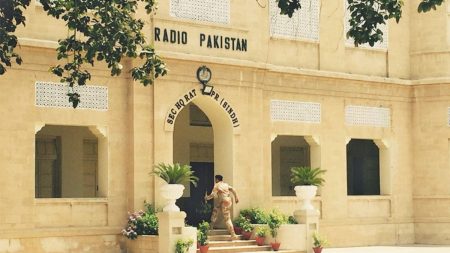Islamabad, Feb 26: A $240 million airport, funded by China in Pakistan’s southwestern port city of Gwadar, remains eerily vacant. Despite its completion in October 2024 under the Belt and Road Initiative (BRI), the New Gwadar International Airport has yet to begin operations. This delay highlights the disparity between grand infrastructure projects and the challenges on the ground in one of Asia’s most controversial economic ventures.
The airport’s modern architecture contrasts starkly with the surrounding region of Balochistan, where economic hardships and security issues persist. For over a decade, billions have been invested in Gwadar through the China-Pakistan Economic Corridor (CPEC), marketed as a crucial link between China’s Xinjiang province and the Arabian Sea.
Yet, the city of 90,000 people still lacks a stable connection to Pakistan’s national power grid, relying instead on inconsistent electricity imports from Iran and limited solar energy solutions. Water shortages also remain a pressing issue, further raising concerns about the feasibility of large-scale infrastructure development in the region.
Despite boasting an annual passenger capacity of 400,000—nearly five times Gwadar’s population—the airport’s utility is questioned due to the city’s isolation. Gwadar’s existing domestic airport operates only a handful of flights per week to Karachi, with no direct connectivity to major hubs like Islamabad or Lahore. The coastal highway, while scenic, lacks essential amenities, further deterring travel to and from the region.
Read More:
FBR Sets Up Special Unit to Curb Customs Corruption
Authorities claim that CPEC projects have created around 2,000 jobs in Gwadar, but it remains unclear whether these opportunities have primarily benefited local Baloch residents or workers from outside the province. Meanwhile, security concerns and travel restrictions continue to limit the city’s integration with the rest of Pakistan.
Fears over safety have also overshadowed the airport’s inauguration. The official opening in late 2024 was conducted virtually by Prime Minister Shehbaz Sharif and Chinese Premier Li Qiang, reportedly to mitigate potential security risks. The event’s secrecy, coupled with the absence of media access during the inaugural flight, reflects the guarded nature of many CPEC-related projects.
For now, the silent runways of the New Gwadar International Airport stand as a symbol of Balochistan’s contradictions—ambitious infrastructure developments rising against the backdrop of enduring economic and social struggles. Until key issues like electricity, water, and security are addressed, the promise of Gwadar as a thriving trade hub remains uncertain.









